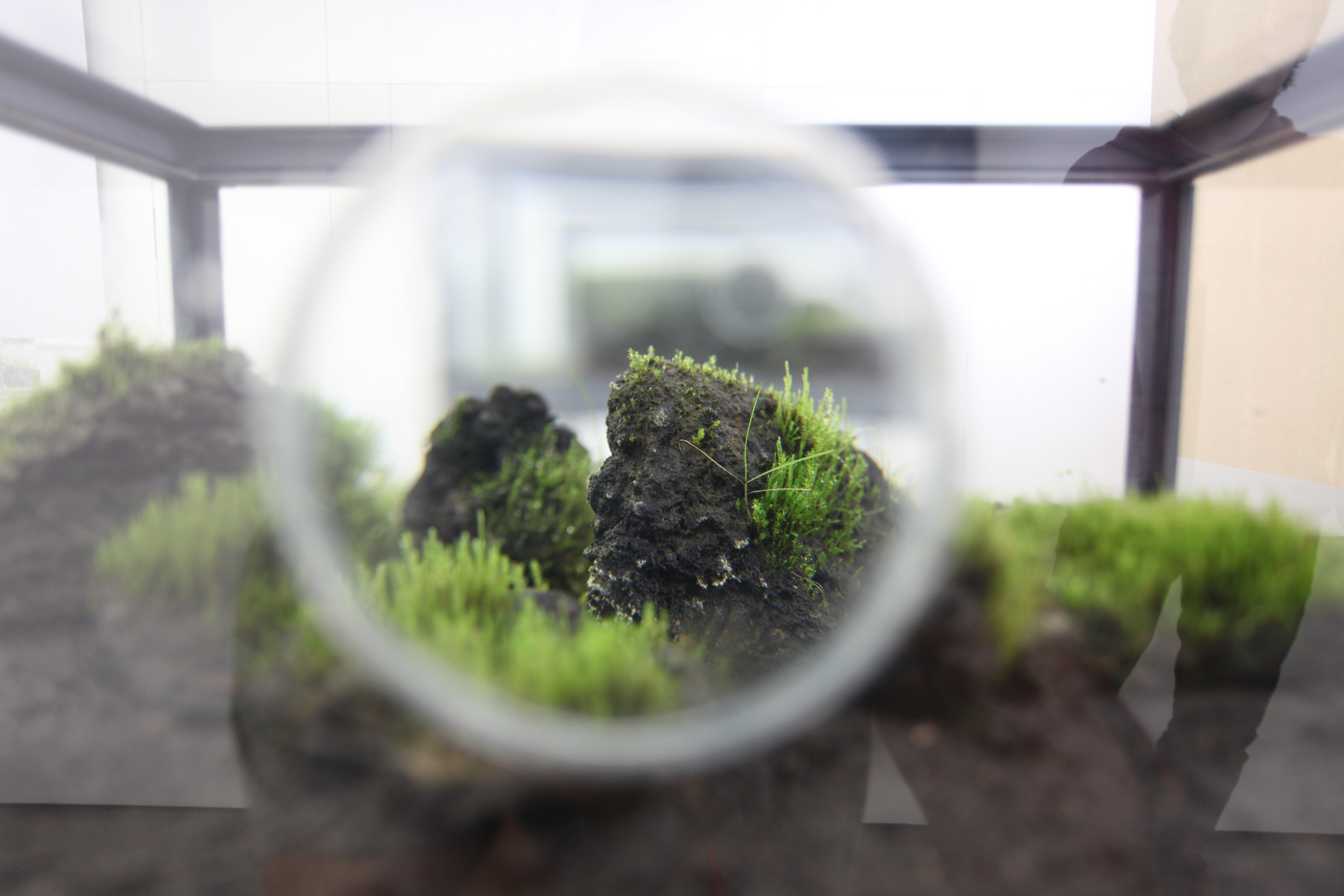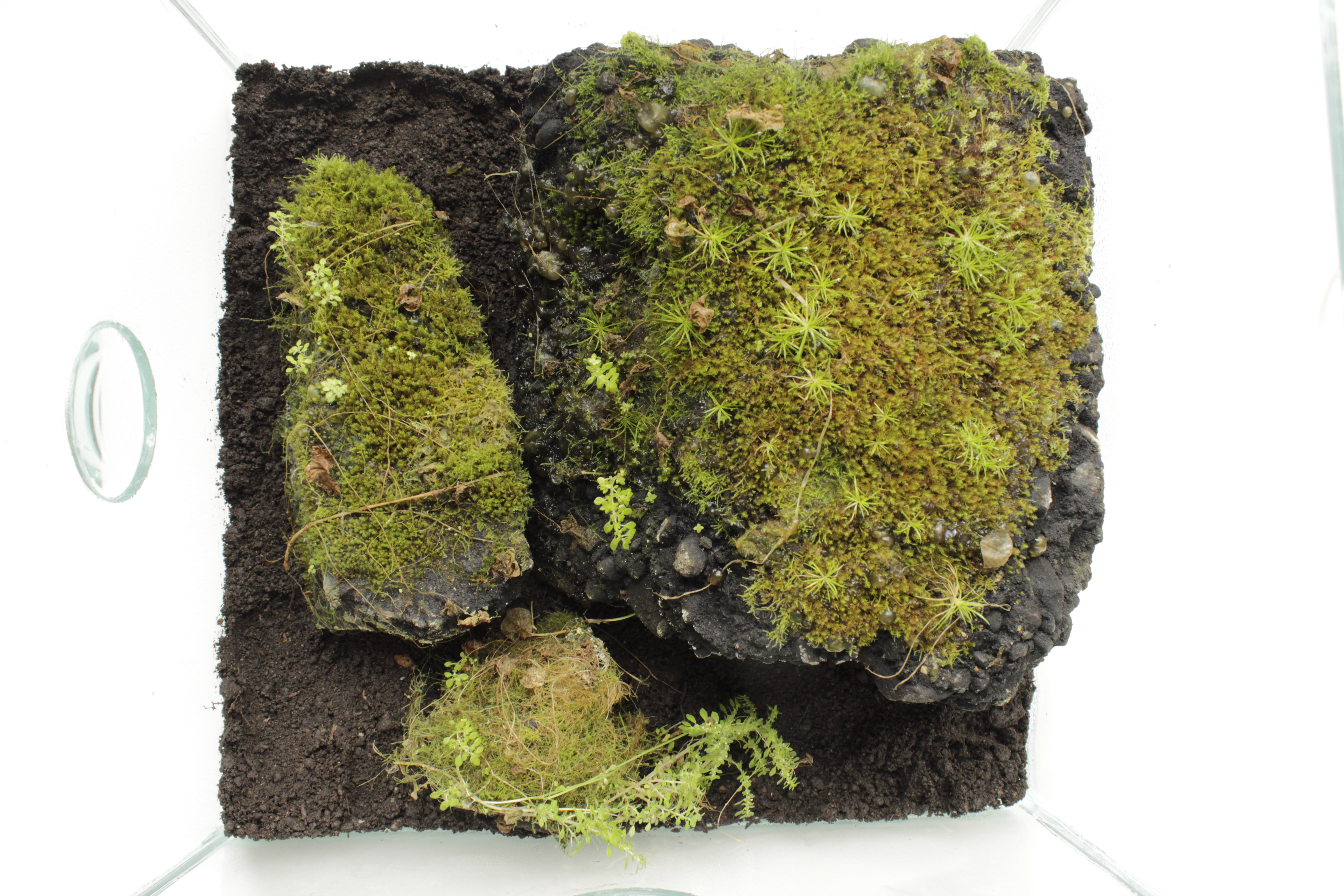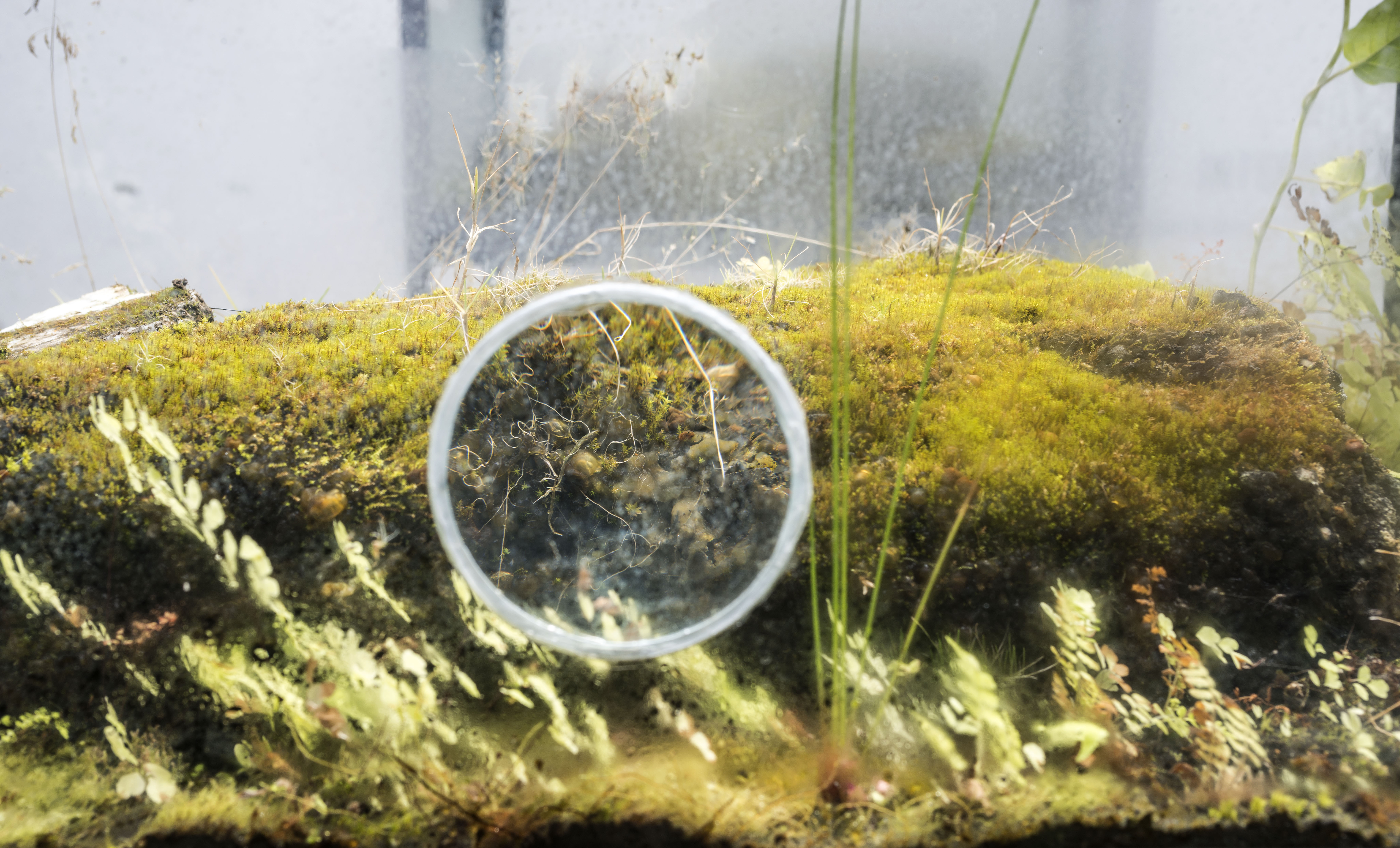




JARDÍN
2016- ongoing
Installation, (Steel, glass, lenses, soil, asphalt, construction debris, surveillance cameras, projectors.)
Dimensions variable
Santiago Beruete points out that the garden is a privileged medium to understand the relationship between a society and their idea of nature and the metaphysics around it, in any given moment of history*. As a cultural practice, the garden is an artform in the same way it is part of everyday life. The garden, as any other art form, serves as a gauge for the times.
This garden is composed of a series of “devices”, gradually built over time, transformed and re-arranged following the whims of circumstance and opportunity. These devices are made out of glass and steel or just collected jars and contain asphalt, cement, brick and other fragments of debris and human made material, placed over a layer of soil. The interior of the devices maintain moisture and temperature fairly constant and allow the development of small ecosystems inside. The devices are not airtight, so the whole of them form a bigger system too.
Many these containers have lenses or are connected to electronic devices that allow their interior to be viewed as if it were a larger scale landscape. These landscapes, however, develop on top of human made material, pointing out the purely semantic separation of both elements, disputing the landscape as a rhetorical device that supports the humanity / nature dichotomy, which has been pointed out by ecologist like Timothy Morton* as one of the biggest obstacles at engaging with the ecological crisis of our times.
The scale of the ecosystem also allows observing its development ( the process of ecological succession) in a reduced time scale, allowing the viewer to understand the systemic and interconnected nature of the image. The landscape as a process, not as an image.
This installation is a garden for the current times, fractured and convulsed, marked by a feeling of finitude and the impossibility to imagine a future outside of science fiction of catastrophe. A garden formed by blossomed ruins, a garden made out of shards and pieces, but a garden nonetheless. It is not possible to maintain a garden without a sense of continuity, a sense of the inevitable future. We tend the garden for tomorrow, so as long as we do, we await for the next day to come.
Jardín has taken many forms and formats: exhibitions and artistic laboratories but also fulfilled the role of a domestic garden. Jardín is a proposition, more than it is a bunch of objects, therefore it remains open and always in the making.
---------------------------------------------------------
*Beruete, Santiago, Jardinosofía, una historia filosófica de los jardines, Turner Noema, 2016.
* Morton Timothy, Ecology without nature, Harvard University Press, 2007.
This installation is a garden for the current times, fractured and convulsed, marked by a feeling of finitude and the impossibility to imagine a future outside of science fiction of catastrophe. A garden formed by blossomed ruins, a garden made out of shards and pieces, but a garden nonetheless. It is not possible to maintain a garden without a sense of continuity, a sense of the inevitable future. We tend the garden for tomorrow, so as long as we do, we await for the next day to come.
Jardín has taken many forms and formats: exhibitions and artistic laboratories but also fulfilled the role of a domestic garden. Jardín is a proposition, more than it is a bunch of objects, therefore it remains open and always in the making.
---------------------------------------------------------
*Beruete, Santiago, Jardinosofía, una historia filosófica de los jardines, Turner Noema, 2016.
* Morton Timothy, Ecology without nature, Harvard University Press, 2007.








